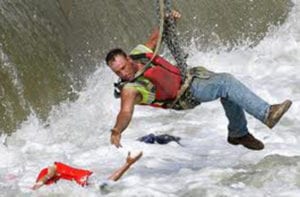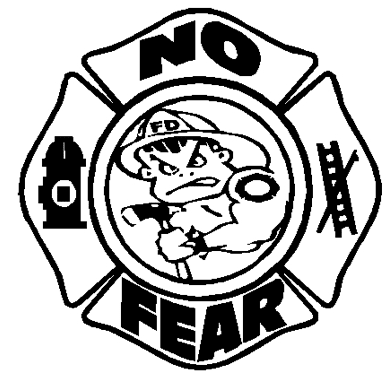
I recently sent out a message across my social media networks (Twitter, Facebook and LinkedIn) about bravado being a barrier to situational awareness. The message, in case you missed it, read:
Bravado: The purposeful ignorance of critical signs of danger coupled with a sense of invincibility. A barrier to situational awareness.
First responders sometimes confuse bravery with bravado and they are two distinctly different concepts. Let’s explore each and discuss how they are linked to situational awareness.
Recall that situational awareness is formed when we capture clues and cues in our environment, comprehend them into meaning in the context of place/time and finally, make accurate predictions about future events by forming mental models.
Bravery: A humble and honorable display of courage.
Bravado: A pretentious, swaggering display of courage.
Bravado as a Barrier
 A person displaying bravado is not concerned with his or her own safety. They are only concerned with looking courageous. This does not make the individual brave. It makes the individual dangerous. Once a person gets into the bravado mindset, the critical first two steps in the formation of situational awareness (purposefully capturing clues and cues and comprehending clues and cues into meaning) can be flawed – even ignored.
A person displaying bravado is not concerned with his or her own safety. They are only concerned with looking courageous. This does not make the individual brave. It makes the individual dangerous. Once a person gets into the bravado mindset, the critical first two steps in the formation of situational awareness (purposefully capturing clues and cues and comprehending clues and cues into meaning) can be flawed – even ignored.
First responders performing brave acts of heroism are part of our noble vocation. But nowhere did any first responder ever take an oath that said they were required to purposefully ignore all signs of danger and perform in a manner of reckless disregard for their own safety or for the safety of other responders.
There are several ways a responder gripped by bravado may miss or disregard the critical clues and cues (signs of danger):
- Being so narrowly focused to performing a heroic task that critical (deadly) clues and cues are missed.
- Seeing the critical (deadly) clues and cues and, with conscious awareness, choosing to ignore them.
- Believing the critical (deadly) clues and cues are not as bad as they might appear and dismissing them.
Duty to Die Syndrome
 A while back an associate of mine, Brian Crawford (then Chief of the Shreveport Fire Department), wrote an article where he proffered the notion that some first responders may suffer from a “Duty to Die Syndrome.” To my knowledge this concept has not been evaluated extensively through the rigors of psychological research so I will, for that reason, keep the Syndrome as a theoretical concept for this discussion.
A while back an associate of mine, Brian Crawford (then Chief of the Shreveport Fire Department), wrote an article where he proffered the notion that some first responders may suffer from a “Duty to Die Syndrome.” To my knowledge this concept has not been evaluated extensively through the rigors of psychological research so I will, for that reason, keep the Syndrome as a theoretical concept for this discussion.
Notwithstanding the lack of scientific evidence, I know many first responders, including myself, have witnessed someone whose incident scene demeanor and risk taking certainly indicated they, at best, showed little regard for their own well-being and for the well-being of others around them. They routinely, and seemingly proudly, took excessive (and arguably unnecessary) risks as if to be tempting their own fate. Unfortunately, other responders can get caught up in it and find themselves in very dangerous situations.
During one of my programs I was discussing the “go” versus “no go” decision making process that all first responders should be trained on to ensure the right decisions are being made, at the right time, for the right reasons. In this discussion I noted there are times when structure fire victims are not savable (they have died in the structure prior to the fire department’s arrival). I further went on to explain that when the “window of civilian survivability” has closed, interior rescue efforts will be unsuccessful and firefighters are in grave danger of becoming victims and, therefore, should not conduct interior rescue operations.
 About a week later I got a phone call from one of the students in that program. He was very upset. He told me his officer (who was in the program the previous week also) corralled the company around the kitchen table, denounced my belief that suggested there are times when a fire is a “no go” and insisted that his company will ALWAYS go in. In his words “that is our sworn duty.” He further told his company that he would fully expect that all of them would go in with him and if they didn’t think they could, they should put in for a transfer to another company that doesn’t want to fight fire aggressively.
About a week later I got a phone call from one of the students in that program. He was very upset. He told me his officer (who was in the program the previous week also) corralled the company around the kitchen table, denounced my belief that suggested there are times when a fire is a “no go” and insisted that his company will ALWAYS go in. In his words “that is our sworn duty.” He further told his company that he would fully expect that all of them would go in with him and if they didn’t think they could, they should put in for a transfer to another company that doesn’t want to fight fire aggressively.
I was stunned. At first I didn’t know what to say. The officer was in full bravado mode. No one, especially some outsider with a PhD, was going to tell him that a fire should not be fought from the interior. He did everything but pluck out his chest hairs while he postured around the room in front of his subordinates. They were hardly impressed. In fact, they were scared because they had seen this behavior from this officer at fires scenes and they had, against their better judgment, followed him into fires they knew they should not have gone in.
 The reason the firefighter contacted me: He thought his officer had a death wish – that he wanted to die on the job. After some discussion and inquiry on my part I learned this officer had a dysfunctional home environment, was divorced 2 times and was alienated from his children. At work, he was essentially friendless because of his mean-spirited demeanor. In a word, he was miserable. The firefighter told me the officer did not seem to have anything worthwhile to live for and, therefore, seemed to be on a self-destruction course. The firefighters under his watch were, rightfully so, concerned he’d try to take them with him.
The reason the firefighter contacted me: He thought his officer had a death wish – that he wanted to die on the job. After some discussion and inquiry on my part I learned this officer had a dysfunctional home environment, was divorced 2 times and was alienated from his children. At work, he was essentially friendless because of his mean-spirited demeanor. In a word, he was miserable. The firefighter told me the officer did not seem to have anything worthwhile to live for and, therefore, seemed to be on a self-destruction course. The firefighters under his watch were, rightfully so, concerned he’d try to take them with him.
Without sharing too much of the detail I coached the firefighter about how to have a meaningful, professional conversation with the officer to express the concerns about his behaviors. I coached the firefighter about how to maneuver through the chain of command and, if that did not work, how to file a formal complaint to put his employer on notice about the concerns of this officer.
Dr. Rich Gasaway’s Advice
 I understand we are firefighters and that we are trained, prepared and willing to lay down our lives to save others. That is what makes our calling so noble – and one that so few people can do. However, I also understand that we all enter this earth with an expiration date. That’s right, none of us get off this ride alive. We are all mortal beings and there’s no sense in rushing the expiration date.
I understand we are firefighters and that we are trained, prepared and willing to lay down our lives to save others. That is what makes our calling so noble – and one that so few people can do. However, I also understand that we all enter this earth with an expiration date. That’s right, none of us get off this ride alive. We are all mortal beings and there’s no sense in rushing the expiration date.
When I was younger, I didn’t think this way. When I was single, I didn’t think this way. Before I had kids, I didn’t think this way. When firefighting was the only – and most important – thing in my life, I didn’t think this way.
I loved tempting the devil and I tempted him – a lot. And, obviously, because you’re reading this article, I won every time. Winning felt good and it gave me confidence to tempt him more and more. I laughed in the face of danger because I knew I was invincible. I had won so many times I knew I could not be beat. I suffered from bravado. I had a dangerous mindset. But I didn’t know it.
I wish I could tell you there was some magnificent fire event where I almost died and it scared me back to reality. But there wasn’t. What got me looking at this a different way was paying attention to how many firefighters were tempting the devil and losing. Then I attended a fire firefighter funeral. Actually it was four firefighter funerals, from a fire on December 20, 1991 in Brackenridge, Pennsylvania (link to the investigation report at the end of this article). While I grew up near Pittsburgh, I did not know any of these firefighters. But the impact of attending the funerals left an indelible mark on my soul. When I looked at all the grieving family members, I knew I did not want to die that way. Nor did I ever want a firefighter under my command to die that way.
Be brave. But be brave in smart ways. Learn how to develop and maintain situational awareness and do the right thing, at the right time, for the right reason.
Action Items
1. Discuss the difference between bravery and bravado.
2. Discuss the risks of bravado and how it can impact situational awareness and first responder safety.
3. Discuss strategies for holding each other accountable if/when someone displaying bravado and putting others at risk.
About the Author
Richard B. Gasaway, PhD, CSP is widely considered a trusted authority on human factors, situational awareness and the high-risk decision making processes used in high-stress, high consequence work environments. He served 33 years on the front lines as a firefighter, EMT-Paramedic, company officer, training officer, fire chief and emergency incident commander. His doctoral research included the study of cognitive neuroscience to understand how human factors flaw situational awareness and impact high-risk decision making.
_____________________________________________________

If you are interested in taking your understanding of situational awareness and high-risk decision making to a higher level, check out the Situational Awareness Matters Online Academy.
CLICK HERE for details, enrollment options and pricing.
__________________________________
Share your comments on this article in the “Leave a Reply” box below. If you want to send me incident pictures, videos or have an idea you’d like me to research and write about, contact me. I really enjoy getting feedback and supportive messages from fellow first responders. It gives me the energy to work harder for you.
Let’s Get connected
Facebook: SAMatters
LinkedIn: Rich Gasaway
LinkedIn: Situational Awareness Matters
Twitter: Rich Gasaway
Youtube: SAMattersTV
itunes: SAMatters Radio
Stitcher Radio: SAMatters Radio
Google Play: SAMatters Radio
iHeart Radio: SAMatters Radio

Rich
Once again, an excellent blog where you decided to challenge the mindset of many in the profession. I would like to believe that the profession has progressed significantly in recent years and these types of stories are the anomaly rather than the norm. Saying, that I recall a training incident several years ago where a fire department was conducting RIT training. One would assume that this is a reasonable topic to train on ( yah, think), but some members were of the belief that they would never put themselves into a position that required a RIT. Yup, I was there and overheard the comment.
I believe that as we progress as a profession Situational Awareness will be taught to every fire fighter just as fire behaviour is taught. It should be a mandatory topic in our profession. We can’t change the past, but we can sure mold the future and strive to eliminate the bravado from our profession.
Les,
Thanks for sharing your feedback in this topic. I, sad to say, was once in an environment where I was surrounded by firefighters consumed with bravado and I became one of them. It took a while to see it… or should I say… outgrow it… or should I say… out mature it. I was fortunate to avoid any consequences.
Rich
Rich,
This was another excellent post and I appreciate the work. I have observed and regrettably participated in the bravado of “youth” that you mention. I have also witnessed the suicidal (For the lack of a better term) bravado as well and would like to see more research and on that as a distinct concern separate from they youth driven bravado.
On another note, have you ever heard of or considered writing on “Firefighter panic syndrome”? I read a paper on the topic several years ago but cannot find it or anything else regarding the topic. The term doesn’t appear in any research I can find but I believe it is a reality and there seems to be a lack of awareness in our industry.
This was just shared with me by our Chief. Spot on Rich! Thank you for bringing this crucial threat out in this forum and I just hope it continues to gain the support needed.
Jeff
Jeff,
Thank you for the kind feedback and for sharing the message forward. I appreciate it!
Rich
Rick,
This was refreshing article. Bravado in the FS has always bothered me and is frequently mistaken for courage. Bravado is also not limited to fire situations. Violent crimes (assaults and the like), suicide attempts and other unstable situations pose the same threat that bravado coupled with tunnel vision might prevail and FS personnel enter those scenes prior to law clearing them. These decisions are based in part on probabilities and bravado. Choosing to enter an unsecured scene a hundred times without incident does not justify the decision. The 101 time there may be a close call, injury or worse. It is not a matter of IF but WHEN this will happen. So was it worth it? The answer is NO. Remember, we put out fires, provide rescue and first aid. We DO NOT enter unstable scenes. A 90 year old, self-inflicted GSW call should be screaming ‘Stage and wait for the scene to be secured by law enforcement!’ Pulling the trigger a second time doesn’t take a lot of strength especially for a person that may not value life. I tell my crews to always look at the upside and downside (risk vs gain potential) of an action BEFORE your decision to act. With rank comes responsibility and the decision you make WILL effect those around you.
Kevin,
Thank you for sharing your input. The content on the site is improved when readers participate and share ideas.
Rich
Pingback: Situational Awareness Survey - Situational Awareness Matters!™Situational Awareness Matters!™